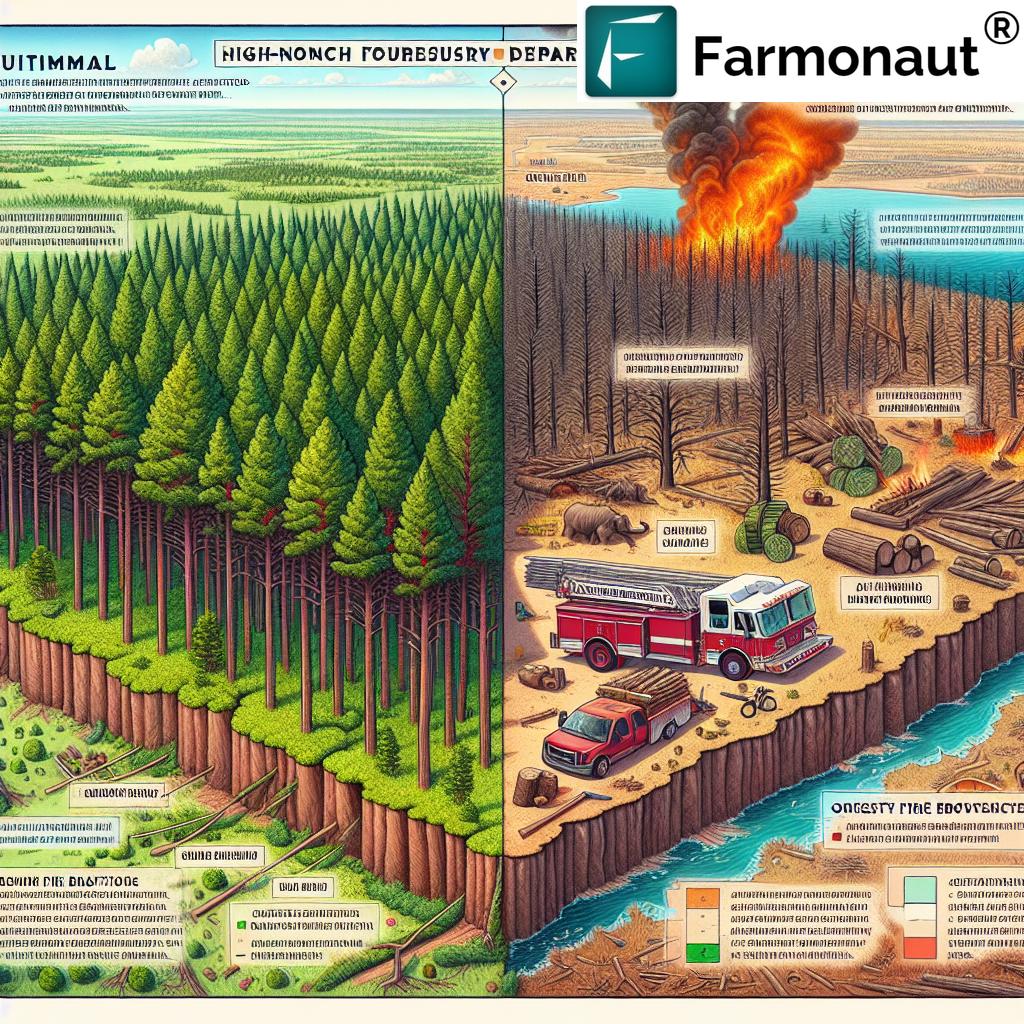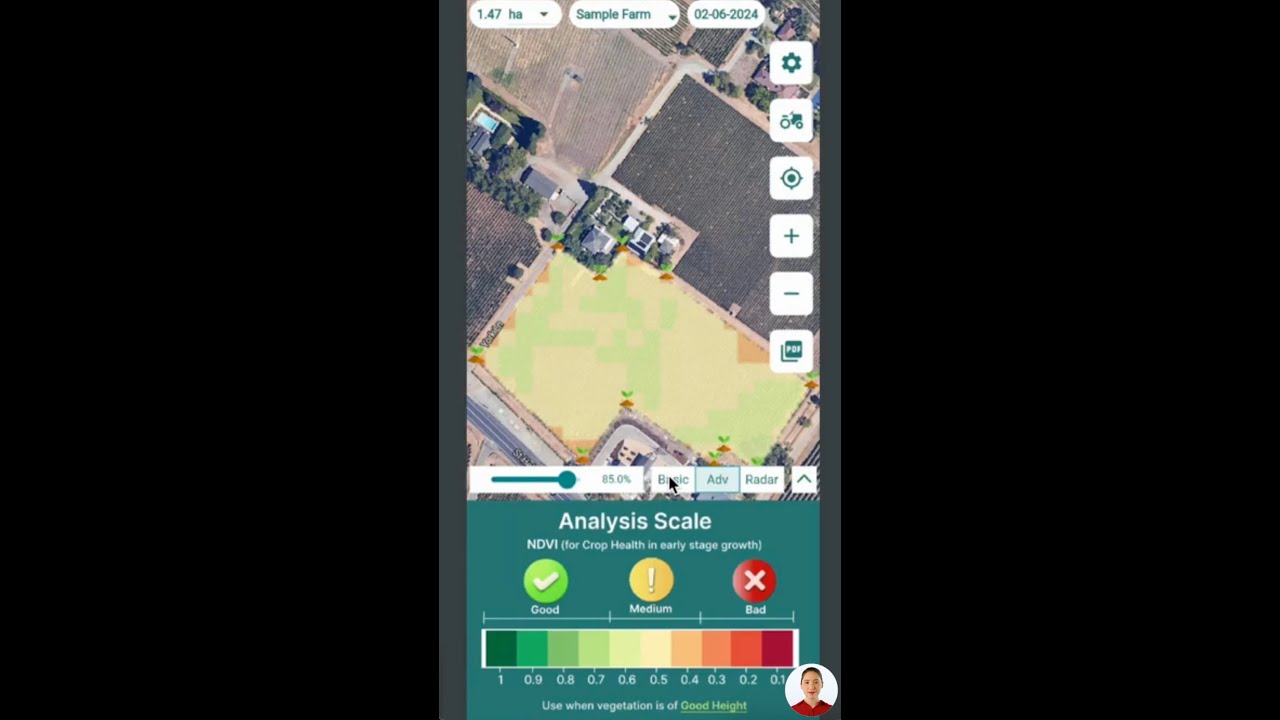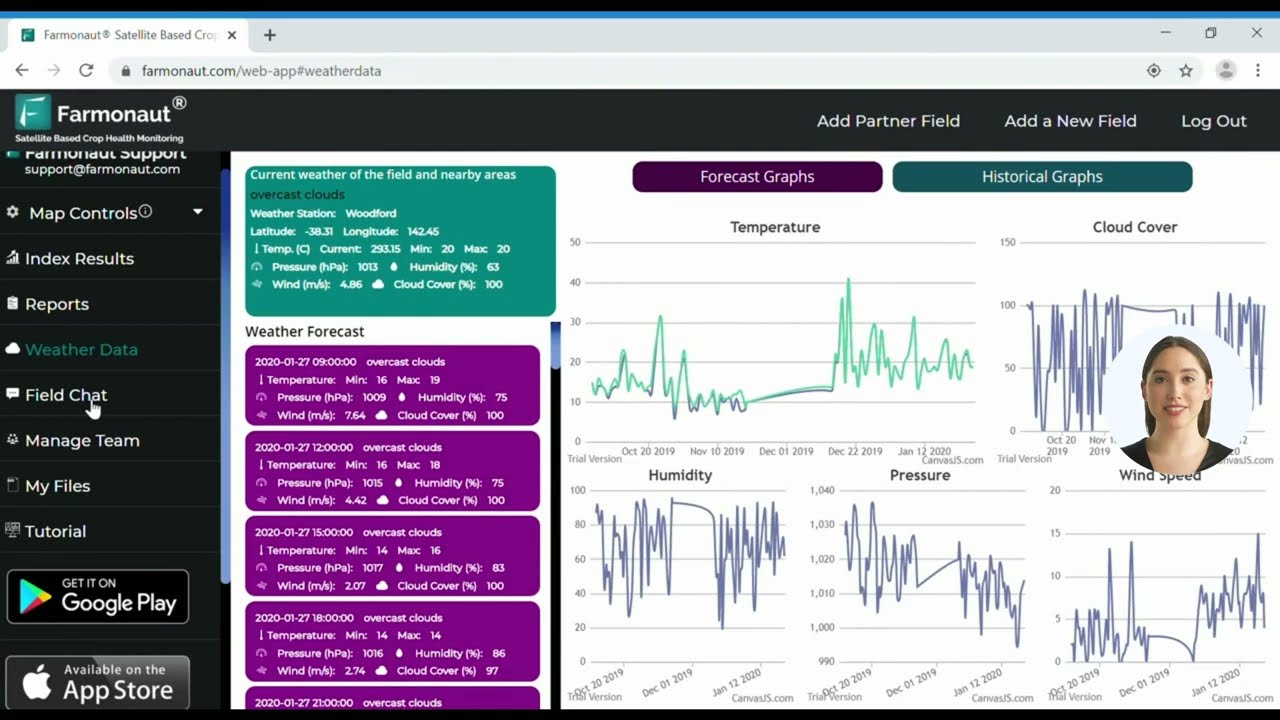Oklahoma Forestry Department Under Fire: Investigating Wildfire Response and Future of State Forest Services
“Oklahoma’s forestry department faces job cuts amid an investigation, impacting the state’s $4.48 billion timber industry.”
In recent weeks, the Oklahoma Forestry Department has found itself at the center of a firestorm of controversy. As we delve into this complex situation, we’ll explore the multifaceted issues surrounding the department’s wildfire response, the ongoing investigation, and the potential reshaping of the state’s forest services. This development has far-reaching implications for public safety, the timber industry, and the future of forestry management in Oklahoma.
The Spark that Ignited the Controversy
The controversy began in the wake of the March 14 wildfire outbreak that swept across parts of Oklahoma. Governor Kevin Stitt expressed dissatisfaction with the Oklahoma Forestry Department’s response to these fires, leading to a series of dramatic events that have shaken the agency to its core.
As a result of this criticism, we’ve seen significant personnel changes within the department. The state forester was dismissed weeks ago, and more recently, Keith Merckx, the public information officer for Oklahoma Forestry Services, was also fired. These high-profile dismissals have sent shockwaves through the agency and raised questions about its future.

The Governor’s Stance and the Investigation
Governor Stitt’s criticism of the forestry department has been both public and pointed. In a statement that sent ripples through the forestry community, he questioned the very existence of the department, saying, “Why do I even have a Department of Forestry? Let’s get rid of the whole thing.”
This bold statement has led to an investigation into the agency’s operations, particularly focusing on its response to the March 14 wildfires. The Governor’s Office has released preliminary findings from this investigation, which claim that the Forestry Department did not deploy all of its available resources during the fire outbreak.
To support these claims, a new map has been released that clarifies where resources were stationed during the wildfire event. This visual representation aims to provide a clearer picture of the department’s response and resource allocation during the crisis.
The Other Side of the Story
While the Governor’s Office has been critical of the forestry department’s response, other organizations have come forward with a different perspective. The Southern Group of State Foresters, which has worked closely with the Oklahoma Forestry Department for several years, paints a different picture of the events leading up to and during the wildfire outbreak.
According to Chelsea Ealum, communications representative for the Southern Group of State Foresters, the Oklahoma team had actually requested additional help ahead of the fires. This proactive approach led to the activation of the South Central Forest Fire Compact, which allowed Oklahoma to bring in support from neighboring states.
This information suggests that the forestry department was aware of the potential severity of the situation and took steps to prepare for it. The activation of the compact demonstrates a level of foresight and inter-state cooperation that seems at odds with the accusations of inadequate response.
The Economic Impact of Potential Changes
One of the most significant aspects of this controversy is the potential economic impact of any changes to the forestry department. Governor Stitt has claimed that eliminating the department could save taxpayers $75 million. However, this figure has been met with skepticism from various quarters.
Scott Blubaugh, president of the American Farmers and Ranchers Cooperative, has voiced concerns about the implications of disbanding the forestry department. He argues that simply reallocating funds to local entities would leave significant gaps in the state’s ability to combat wildfires effectively.
Moreover, Blubaugh emphasizes the crucial role the forestry department plays beyond wildfire management. In southeastern Oklahoma, the timber industry is a significant economic driver, contributing approximately 19,000 jobs to the state’s economy. The forestry department plays a vital role in supporting and regulating this industry.
Another economic consideration is the potential impact on insurance rates. Blubaugh suggests that without the forestry department, insurance rates for property owners in forested areas could increase significantly. This could have a ripple effect on the state’s economy, affecting both individual homeowners and businesses.
The Formation of the Wildland Fire Response Working Group
“The newly formed Wildland Fire Response Working Group aims to enhance Oklahoma’s wildfire capabilities across 12.6 million acres of forests.”
In response to the ongoing controversy and the need for a comprehensive review of the state’s wildfire response capabilities, the Governor’s Office has announced the formation of a Wildland Fire Response Working Group. This group has been tasked with developing a set of recommendations to enhance Oklahoma’s wildfire mitigation, suppression, and recovery capabilities.
The working group will focus on several key areas:
- Unified response efforts
- Interagency coordination
- Strategic partnerships
Co-led by the Secretary of Public Safety, Tricia Everest, and the Secretary of Agriculture, Blayne Arthur, the group brings together expertise from various sectors relevant to wildfire management and forestry.
The working group has been given a tight timeline, with directives to convene within 30 days and submit formal recommendations to the Governor and Legislature within six months. This urgency underscores the importance of the issue and the need for swift action to address the state’s wildfire response capabilities.
The Role of Technology in Modern Forestry Management
As we consider the future of Oklahoma’s forestry services, it’s crucial to recognize the role that advanced technology can play in enhancing wildfire prevention and response. Innovative solutions, such as those offered by companies like Farmonaut, are revolutionizing the way we approach forest management and fire prevention.
Farmonaut’s satellite-based crop health monitoring system, while primarily designed for agricultural use, has potential applications in forestry management. By leveraging multispectral satellite imagery, forest managers could gain valuable insights into vegetation health, soil moisture levels, and other critical metrics that could help predict and prevent wildfires.
For instance, the crop plantation and forest advisory services offered by Farmonaut could be adapted to provide real-time monitoring of forest conditions. This technology could help forestry departments identify high-risk areas for wildfires before they occur, allowing for more targeted prevention efforts.
Moreover, Farmonaut’s AI-driven advisory system, Jeevn AI, could be adapted to provide personalized recommendations for forest management. By analyzing satellite data and other inputs, such a system could offer tailored strategies for fire prevention and response, enhancing the efficiency of forestry departments.
The Importance of Data-Driven Decision Making
As the controversy surrounding the Oklahoma Forestry Department unfolds, it becomes clear that data-driven decision making is crucial in modern forestry management. The use of advanced technologies, such as those offered by Farmonaut, can provide valuable data to inform policy decisions and resource allocation.
For example, Farmonaut’s large scale farm management solutions could be adapted for forestry use, allowing for more efficient monitoring and management of vast forested areas. This could potentially address some of the concerns raised about resource deployment during wildfire events.

Furthermore, the use of satellite imagery and AI analysis could provide more accurate and timely information about forest conditions, helping to predict potential fire risks and allowing for more proactive prevention measures.
Comparative Analysis: Current System vs. Proposed Changes
To better understand the potential impact of the proposed changes to Oklahoma’s forestry services, let’s examine a comparative analysis of the current system and the potential future state:
| Aspect | Current System | Proposed Changes |
|---|---|---|
| Agency Structure | Centralized Oklahoma Forestry Department | Potential disbandment or significant restructuring |
| Staffing Levels | Estimated 200-300 employees | Potential significant reduction or redistribution to local entities |
| Budget Allocation | Approximately $75 million (as per Governor’s statement) | Potential reallocation to local fire departments and other agencies |
| Wildfire Response Time | Varies, with state-wide coordination | Potentially longer response times due to less coordinated efforts |
| Interagency Coordination | Established protocols with state and interstate partnerships | Potential for fragmented coordination without central authority |
This comparison highlights the potential challenges that could arise from a significant restructuring of the state’s forestry services. While there may be potential cost savings, the impact on wildfire response capabilities and interagency coordination could be substantial.
The Role of Technology in Enhancing Forestry Management
As we consider the future of Oklahoma’s forestry services, it’s crucial to explore how advanced technologies could enhance forest management and wildfire prevention. Innovative solutions like those offered by Farmonaut have the potential to revolutionize the way we approach these challenges.
For instance, Farmonaut’s satellite-based monitoring systems could be adapted for forest management. By providing real-time data on vegetation health and soil moisture levels, such technology could help identify high-risk areas for wildfires before they occur. This proactive approach could significantly improve wildfire prevention efforts.
Moreover, Farmonaut’s AI-driven advisory system could be adapted to provide personalized recommendations for forest management. By analyzing satellite data and other inputs, such a system could offer tailored strategies for fire prevention and response, enhancing the efficiency of forestry departments.
The Importance of Sustainable Forestry Practices
As we navigate this controversy, it’s crucial to remember the importance of sustainable forestry practices. Oklahoma’s forests are not just a resource to be managed for wildfire prevention; they are a vital part of the state’s ecosystem and economy.
Farmonaut’s carbon footprinting tools, while designed for agricultural use, highlight the growing importance of sustainability in land management. Similar principles could be applied to forestry, helping to balance the needs of timber production with environmental conservation.
Furthermore, sustainable forestry practices can play a crucial role in wildfire prevention. By maintaining healthy, diverse forests, we can create ecosystems that are more resilient to fire and other natural disturbances.
The Economic Implications of Forestry Management
The ongoing controversy surrounding the Oklahoma Forestry Department underscores the significant economic implications of forestry management. As mentioned earlier, the timber industry in Oklahoma contributes approximately 19,000 jobs to the state’s economy. Any changes to the forestry department could have far-reaching effects on this industry.
Moreover, effective forestry management has implications beyond the timber industry. It affects property values, insurance rates, and even tourism in forested areas. The potential economic impact of disbanding or significantly restructuring the forestry department must be carefully considered.
In this context, innovative solutions like Farmonaut’s crop loan and insurance services highlight the importance of financial tools in land management. While these services are currently focused on agriculture, similar principles could be applied to forestry, potentially helping to mitigate economic risks associated with wildfires and other forest-related challenges.
The Future of Oklahoma’s Forestry Services
As we look to the future of Oklahoma’s forestry services, it’s clear that significant changes may be on the horizon. The formation of the Wildland Fire Response Working Group signals a commitment to reevaluating and potentially restructuring the state’s approach to wildfire management and forestry services.
However, it’s crucial that any changes are made with careful consideration of their potential impacts. The controversy surrounding the Oklahoma Forestry Department highlights the complex interconnections between public safety, economic interests, and environmental stewardship.
As we move forward, it will be essential to leverage advanced technologies and data-driven approaches to enhance forestry management and wildfire prevention. Solutions like those offered by Farmonaut demonstrate the potential for innovation in this field, and similar technologies could play a crucial role in shaping the future of Oklahoma’s forestry services.
Conclusion
The ongoing investigation into the Oklahoma Forestry Department and the potential reshaping of the state’s forest services represent a critical juncture for wildfire management and forestry in Oklahoma. As we’ve explored, this issue touches on a wide range of concerns, from public safety and economic impacts to technological innovation and sustainable land management practices.
While the path forward remains uncertain, one thing is clear: the decisions made in the coming months will have far-reaching implications for Oklahoma’s forests, its timber industry, and its ability to combat wildfires effectively. As stakeholders work to address these challenges, it will be crucial to consider all perspectives and leverage the best available data and technologies to inform decision-making.
The controversy surrounding the Oklahoma Forestry Department serves as a reminder of the complex challenges involved in managing natural resources and protecting public safety. As we move forward, it will be essential to strike a balance between fiscal responsibility, effective wildfire management, and the long-term health of Oklahoma’s forests.
FAQ Section
- What led to the investigation of the Oklahoma Forestry Department?
The investigation was prompted by Governor Kevin Stitt’s criticism of the department’s response to the March 14 wildfire outbreak. - What are the potential economic impacts of disbanding the forestry department?
While the governor claims it could save $75 million, critics argue it could negatively impact the $4.48 billion timber industry and potentially increase insurance rates. - What is the Wildland Fire Response Working Group?
It’s a newly formed group tasked with developing recommendations to enhance Oklahoma’s wildfire mitigation, suppression, and recovery capabilities. - How could technology improve forestry management and wildfire prevention?
Advanced technologies like satellite imagery and AI-driven analysis could provide real-time data on forest conditions, helping to predict and prevent wildfires more effectively. - What are the potential challenges of restructuring the state’s forestry services?
Challenges could include longer response times to wildfires, fragmented coordination between agencies, and potential negative impacts on the timber industry.
Earn With Farmonaut: Earn 20% recurring commission with Farmonaut’s affiliate program by sharing your promo code and helping farmers save 10%. Onboard 10 Elite farmers monthly to earn a minimum of $148,000 annually—start now and grow your income!




















Some genuinely nice and useful information on this web site, besides I conceive the layout holds wonderful features.